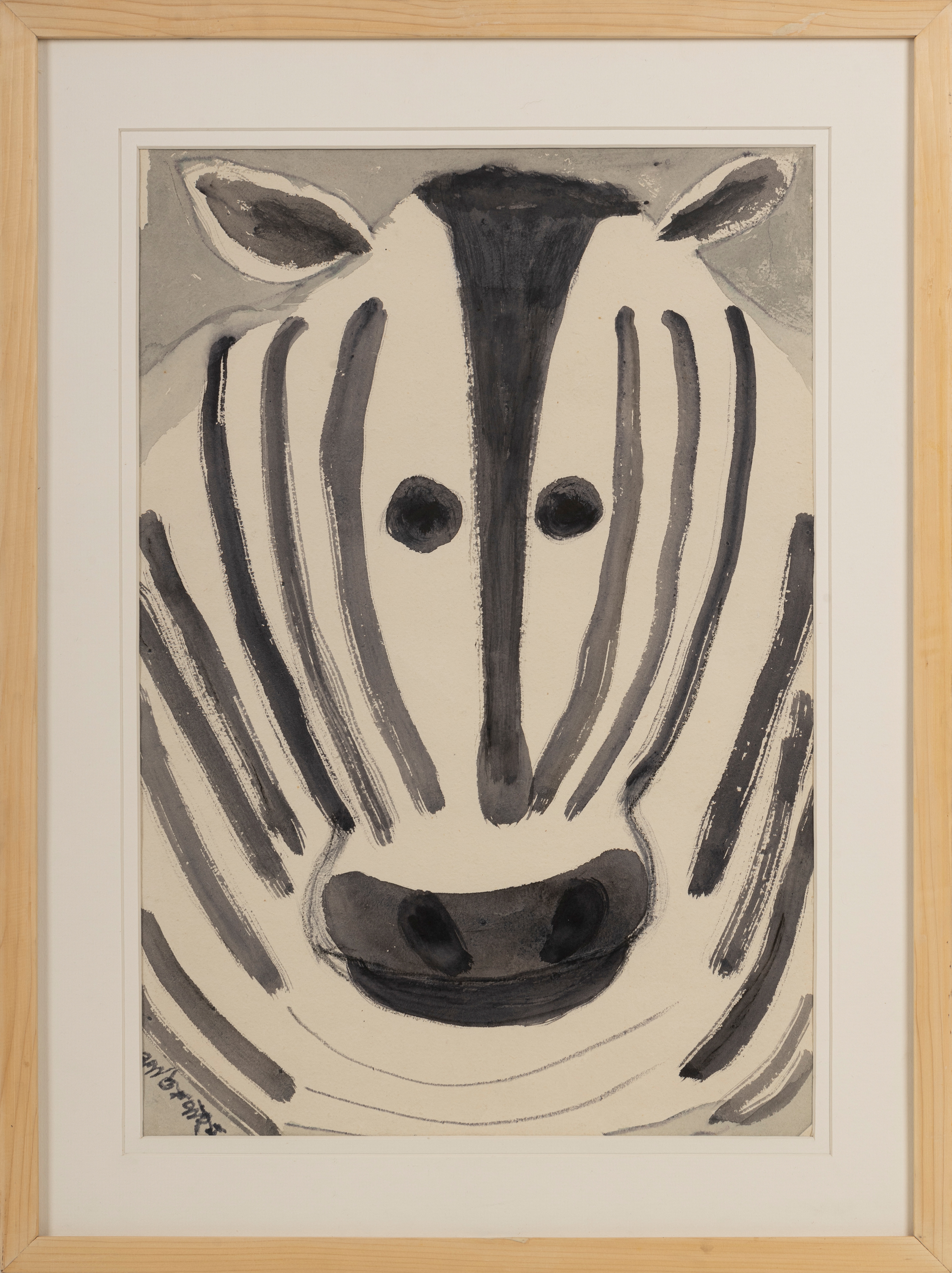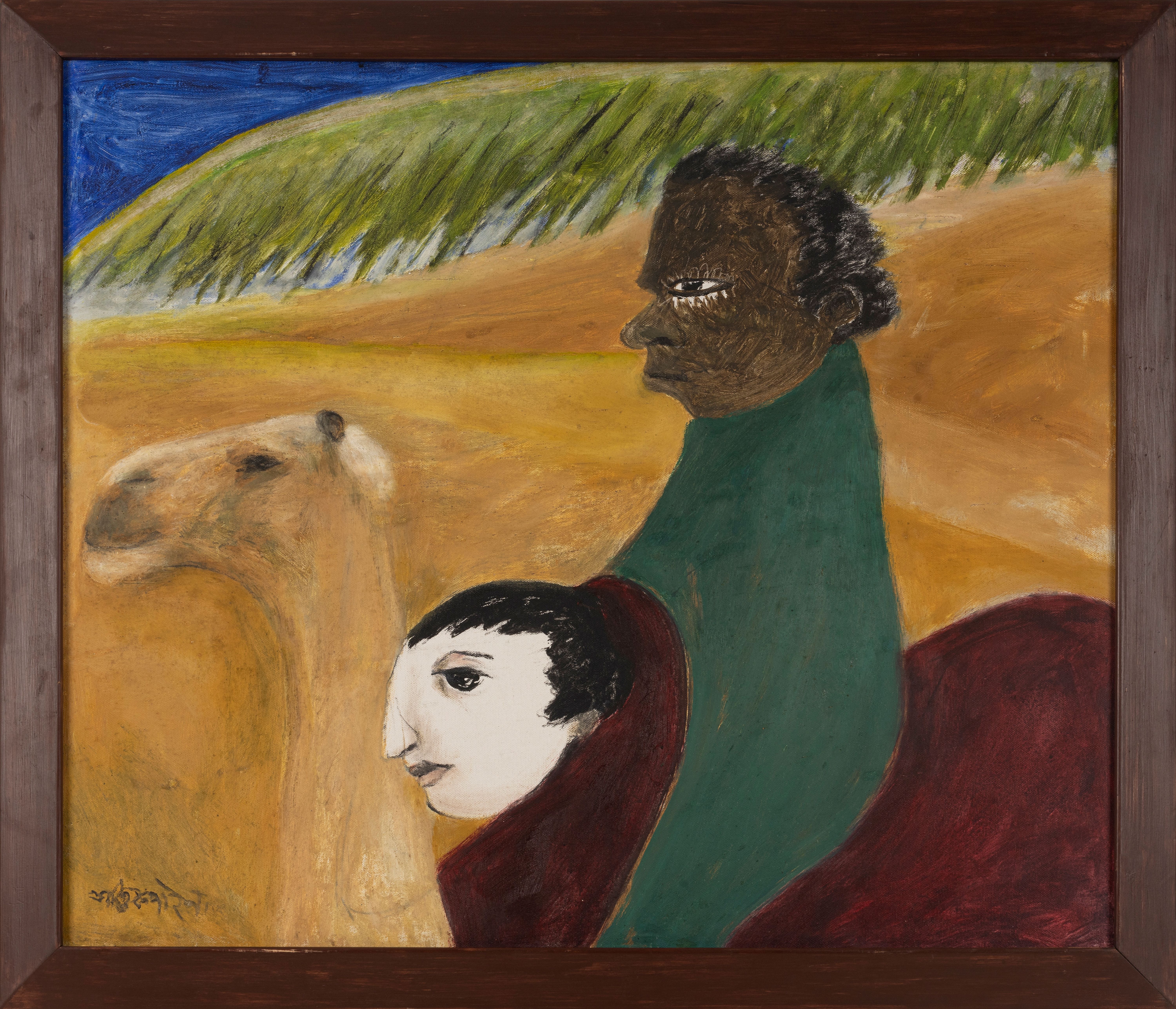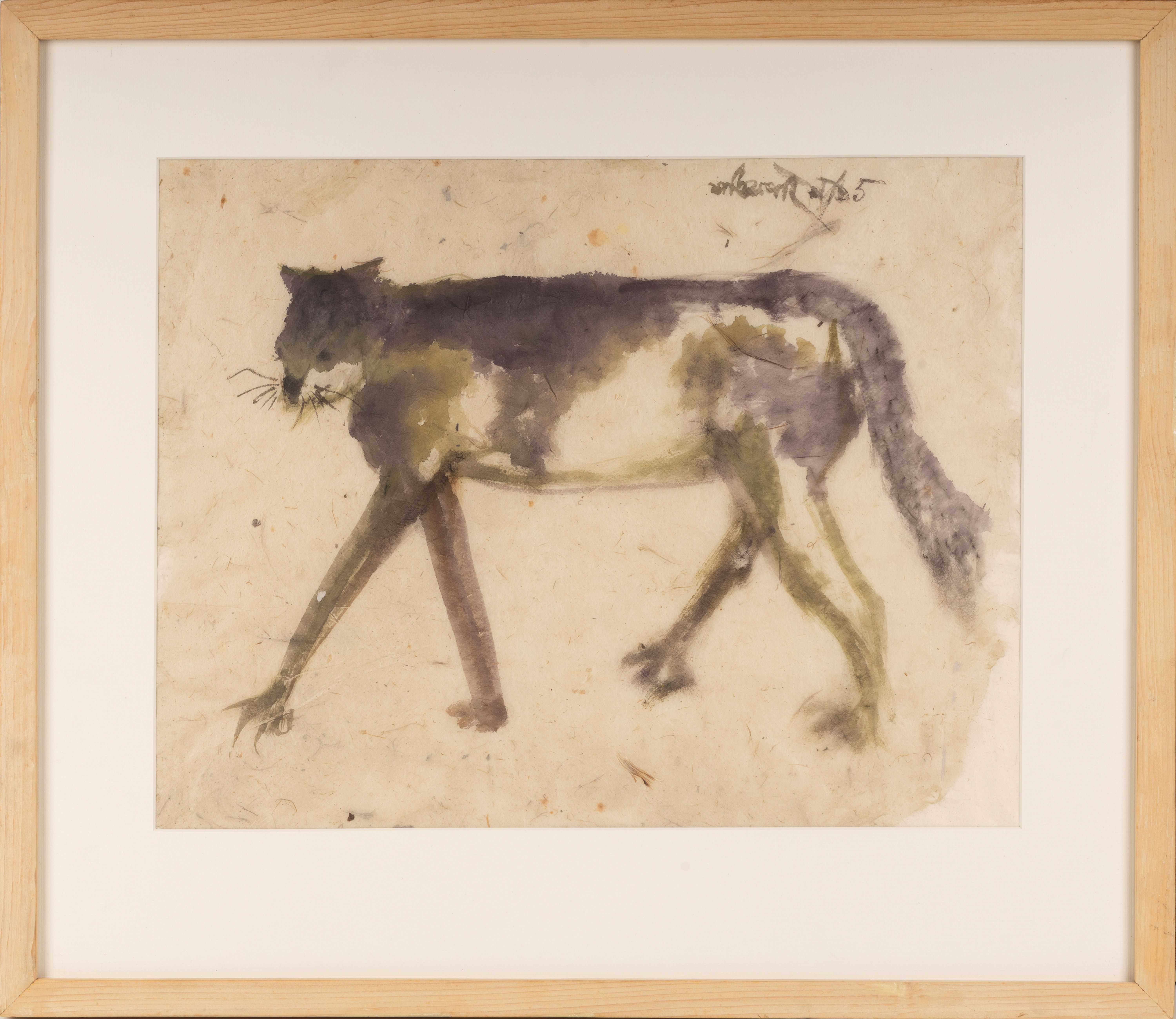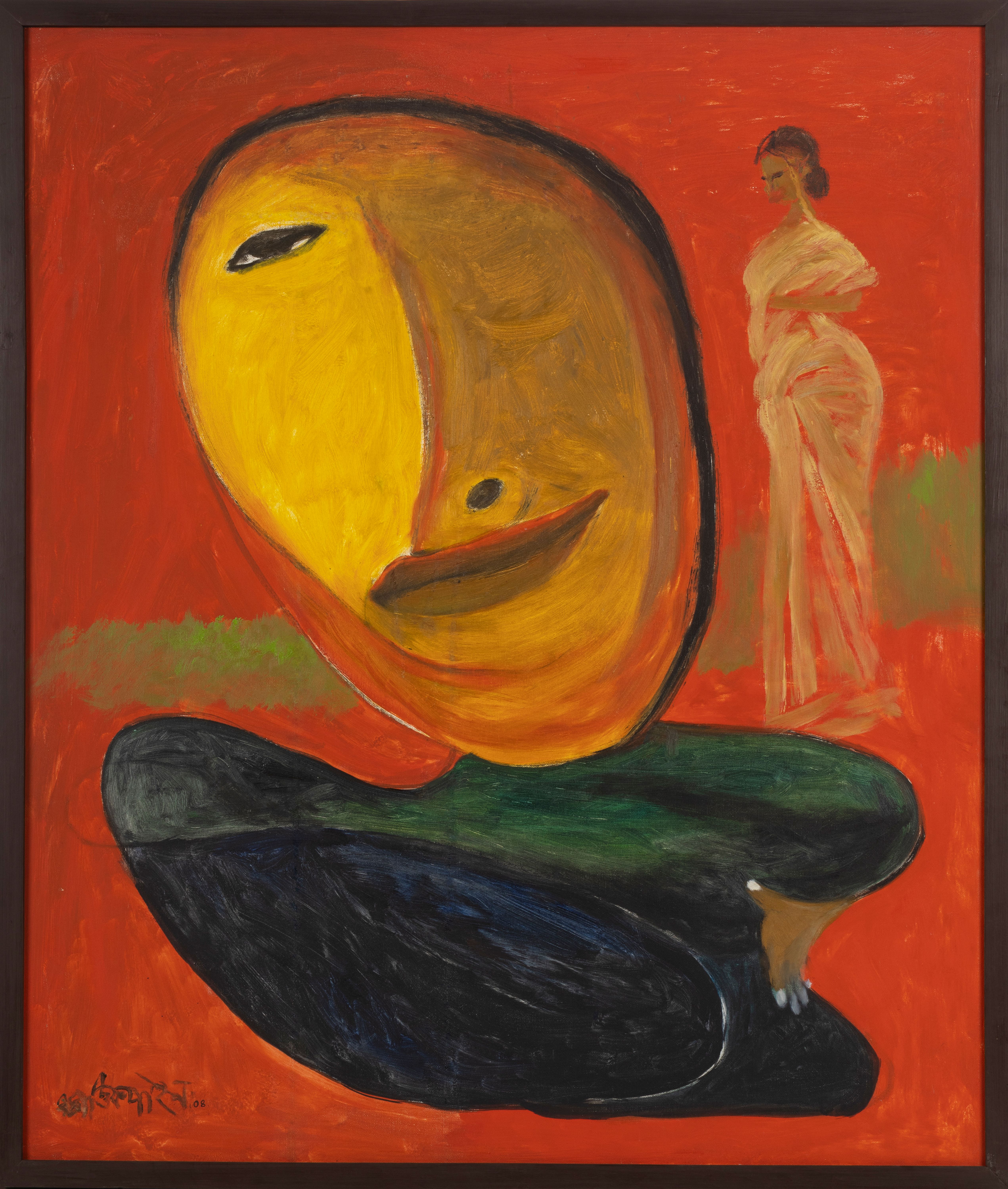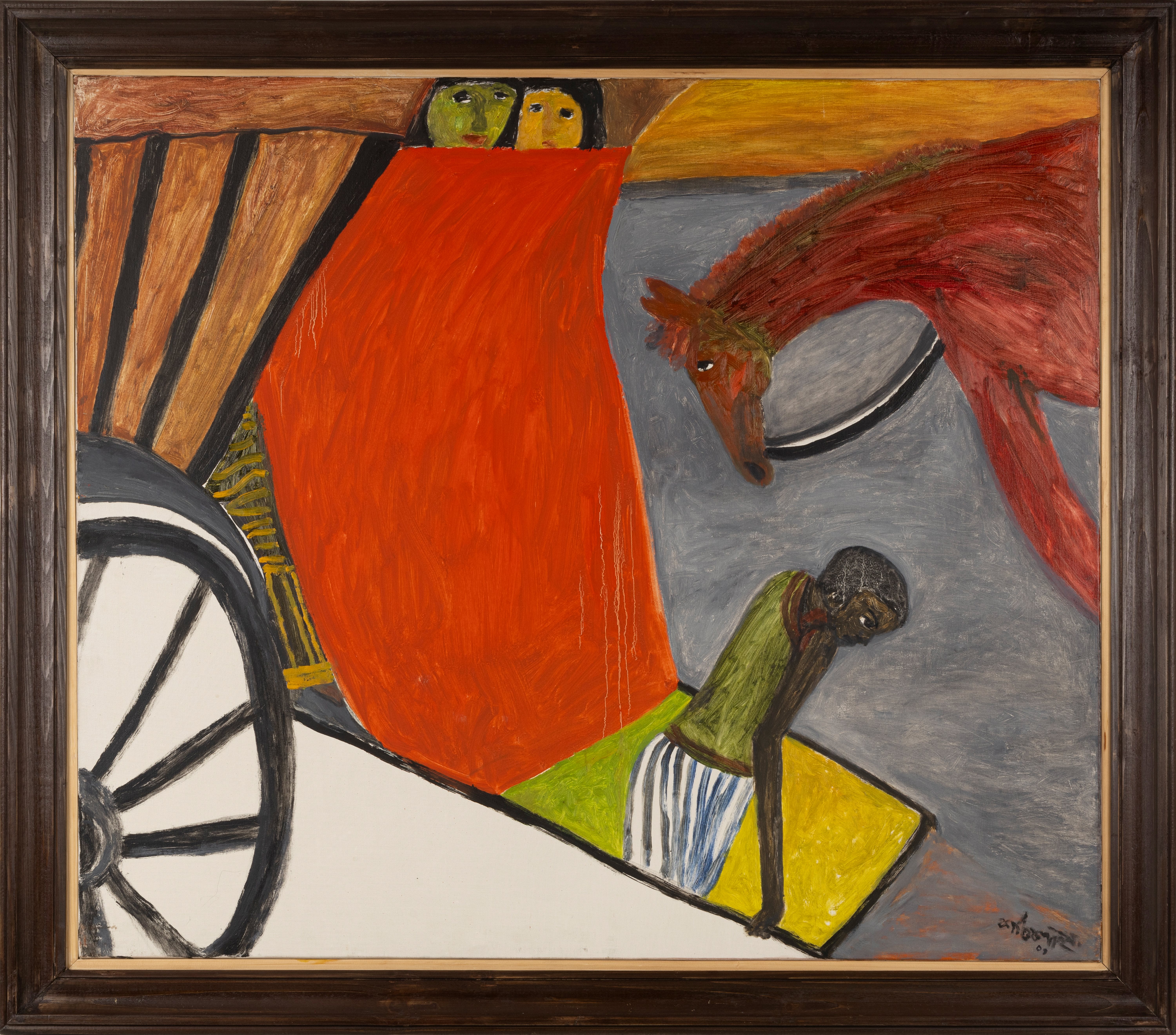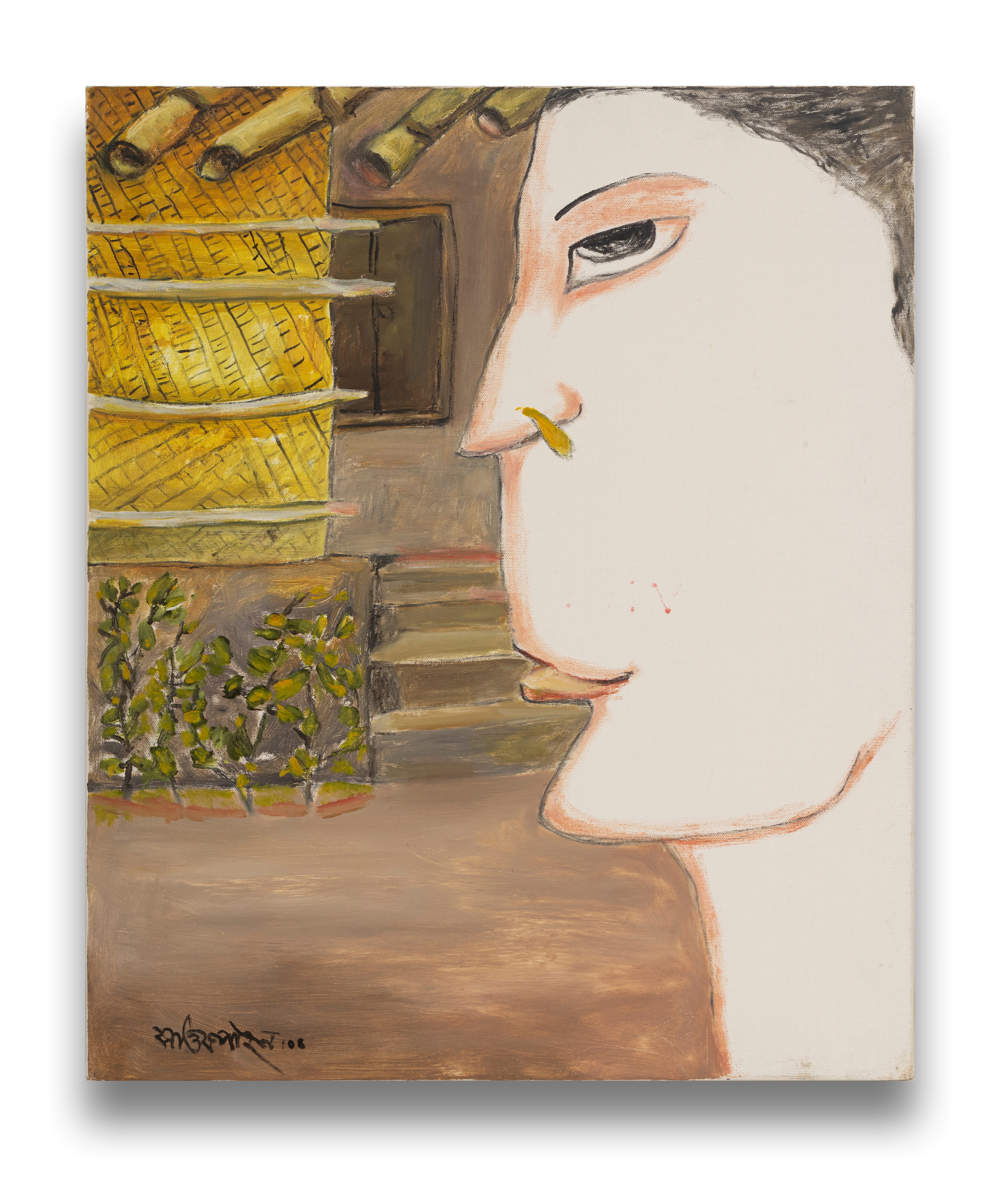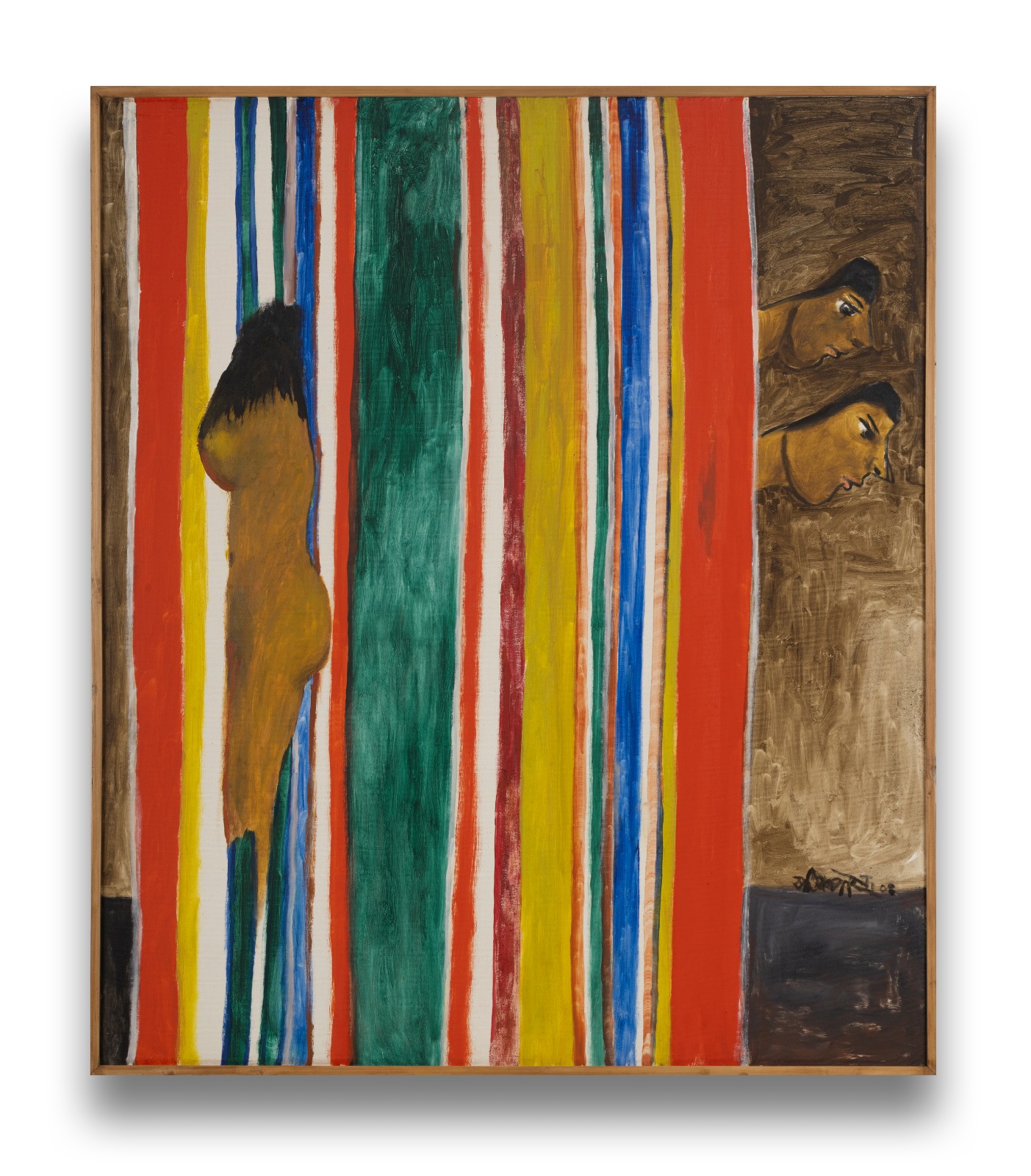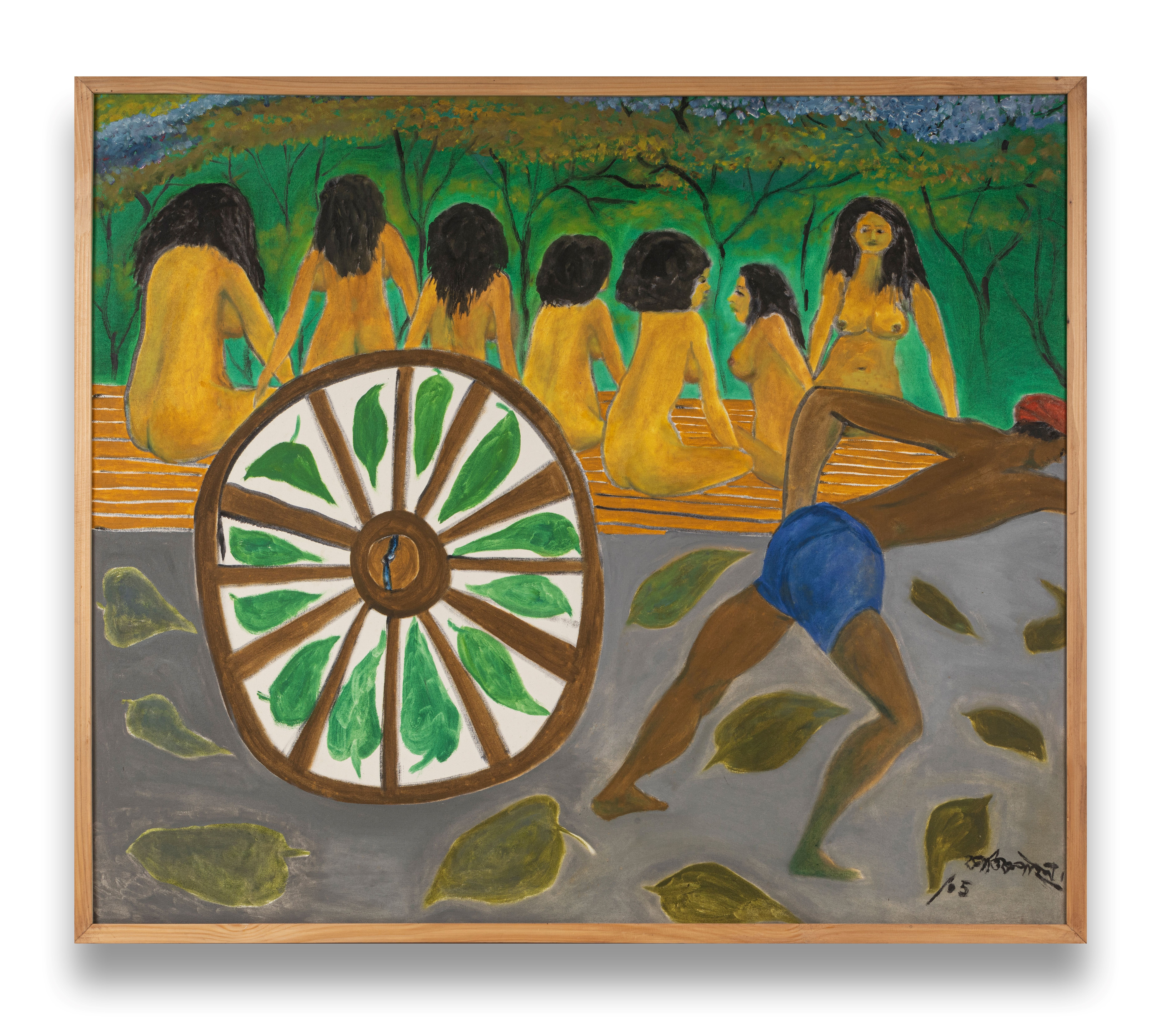The Hidden Moon: An Exhibition of Artworks by Kartick Chandra Pyne
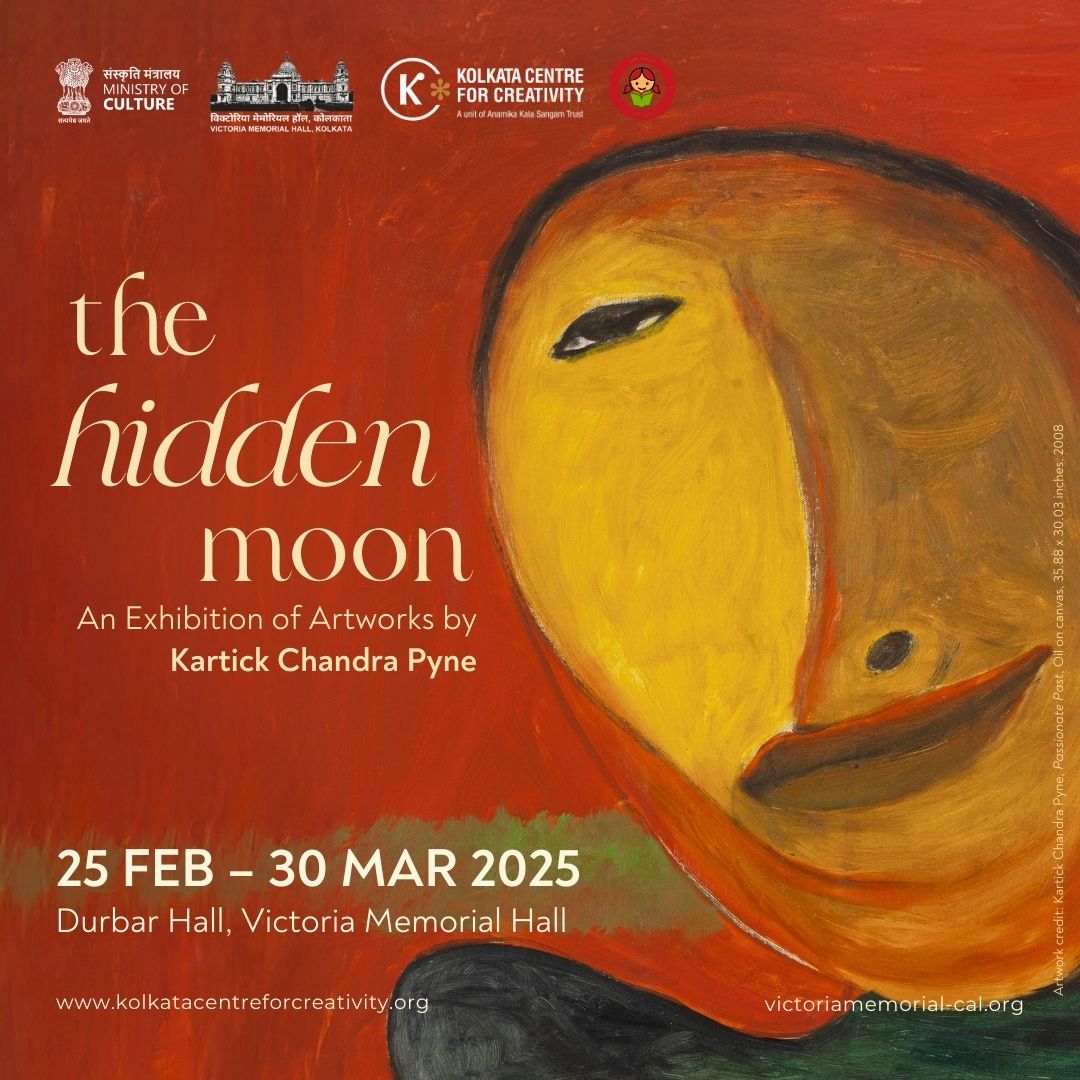
Dates: 25 February – 30 March 2025
Time: 11:00 AM – 5:30 PM
Venue: Durbar Hall, Victoria Memorial Hall
KCC in collaboration with the Victoria Memorial Hall presents a solo exhibition bringing together Kartick Chandra Pyne’s paintings from various areas of his practices and phases of his long artistic career, mostly from his mature years. Backed by extensive archival research, the exhibition and several collateral programmes are set to create a space for dialogue and discussion around Pyne’s artistic practice, recognizing its relevance and significance in today’s context.
The exhibition and its collateral events are free and open to all; however, standard VMH entry fees apply.
CURATORIAL NOTE
Kartick Chandra Pyne was born to an aristocratic family of gold merchants in 1931 in Kolkata. Deeply religious, the family had a rich cultural atmosphere and an interest in art at home. One of his brothers, Fulchand Pyne, is a noted sculptor, and Ganesh Pyne also had distant familial connections with him. Those who knew Kartick Pyne saw him as a prolific but introverted artist who maintained a low public profile, showing a certain reluctance to the glamorous world of contemporary art and the art market.
In the post-independence era, when he enrolled at the Government Art College in the early 1950s, an aspiration was widespread among the young Indian artists of the new nation-state to carve a prominent place for themselves in the international art scene. Of the Bengali artists of his generation, Kartick Pyne was amongst the few who were prompt to recognize the spirit of the age and the new direction modern Indian art was taking. Moving away from academic realism, he drew upon the styles and idioms of the principal modern artists of the West, such as Matisse, Gauguin, Marc Chagall and Seurat and dominant trends of Western art movements like Post-Impressionism, Fauvism, Primitivism and Surrealism. However, what is significant is undoubtedly not how much his work was derivative but how, in the specific stylistic, conceptual and emotional matrix of his painting, those influences – local, national and foreign – were received and assimilated, making his vibrant work exemplary of Indian Modernism.
Religion had a substantial impact on his life, as well as on his work. But, he was more interested in the affective and visual economy of the symbols and images and their subtle connections to theology rather than in making religious art. The recurrent use of the image of a lovelorn peacock with its train fully spread in his paintings intimates his deep connection to Vaishnavism. There can be many more, such as the woman with the sacred Jaba or Bandhuka flower (Hibiscus Flower) and the bull’s head against the red background with a peacock feather on it. Later in his life, he did fewer paintings based on mythological themes, but one can find them latent in much of his imagery. His exploration of the relationship between the male drivers – be it a boatman, rickshaw puller or bullock cart puller – and the women commuters in his paintings indicate the story of Nauka Vihar of Radha Krishna as its point of reference. The allegorical imagination – so rich in fantasy and central to Kartick Pyne’s entire oeuvre – is, in fact, a space of translation, a site in which various heterogeneous elements from diverse sources come together, creating a great coalescence of form. His paintings, therefore, can poetically be called a place of the hidden moon, a place of reconciliation of the sensible and divine worlds, of intense emotions and ascetic detachment, which constitute the aesthetics of his mature works. As a young boy growing up in Kolkata and also in Sodepur, near Khardaha, West Bengal, one of the prominent seats of Shaiva and Vaishnava-Sahajiya cults of Bengal at the bank of Ganga, he imbibed the syncretic essence of the mystic spiritual life early on, which found remarkable manifestations in his modern paintings in the later life.
Besides this, Kartick Pyne painted a large body of birds, fishes, animals and landscape, exploring elective affinities between the world seen and experienced and imagined. The experience of seeing Kartick Pyne’s vibrant, colourful paintings is encountering a strange, exogenous world in which women, nature, birds and animals are inseparably interconnected, creating remarkable plasticity and figural kinship– the non-duality of seeming duality.
- Arkaprava Bose
ABOUT THE ARTIST
Born in 1931 in Kolkata, Kartick Chandra Pyne studied painting at the Government College of Art and Craft, Calcutta, between 1950 and 1955. A prolific and taciturn artist, his work was shown as one of the hundred exhibits representing modern Indian Art in the historic exhibition at Fukuoka Art Museum, Japan 1979. His paintings were part of the ICCR exhibition in Bangladesh in 1991-92. Since the 1960s, his work has been featured in numerous solo exhibitions at Jehangir Art Gallery, Mumbai; Academy of Fine Arts, Kolkata; Bajaj Art Gallery, Mumbai; Chitrakoot Art Gallery, Kolkata; Lalit Kala Akademi, New Delhi; Dhoomimal Art Gallery, New Delhi, among many others. A recent retrospective-scale survey exhibition of his work was organized by Emami Art, Kolkata, in 2021.
He received the prestigious Shilpi Maha Samman and Abanindra Puraskar of the Government of West Bengal. Rajya Charukala Parshad made a documentary film on him called “Line, Story, Design,” which was released in 2017.
Kartick Chandra Pyne died in Kolkata in 2017.
Artwork Details
Untitled
Kartick Chandra Pyne
Watercolour and ink on paper
13.5 x 24.8 in. (34.29 x 63.2 cm.)
Undated

